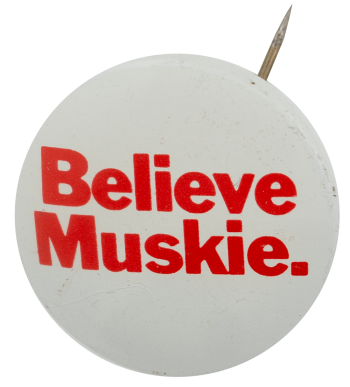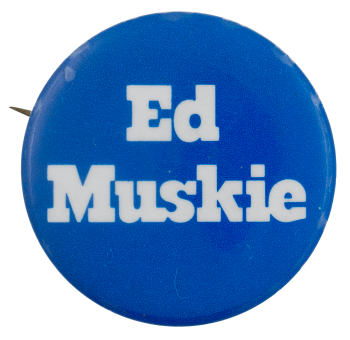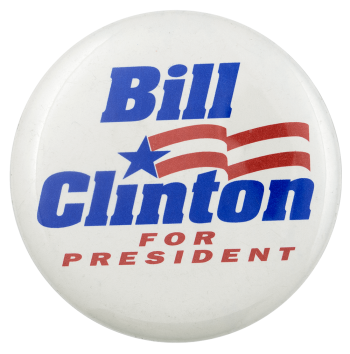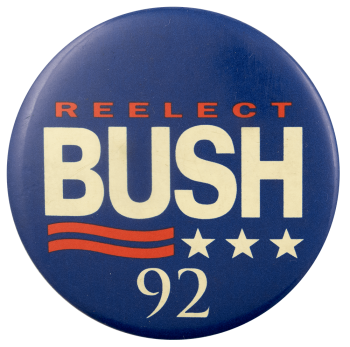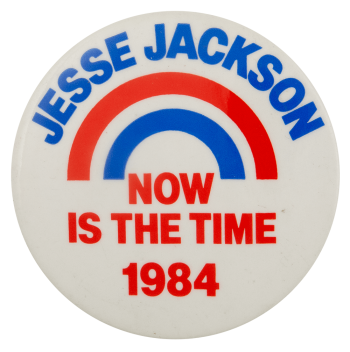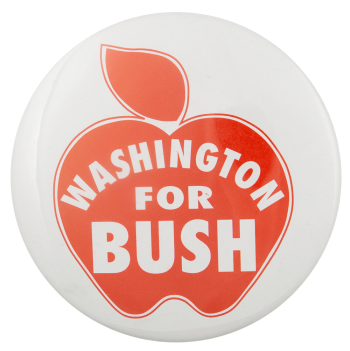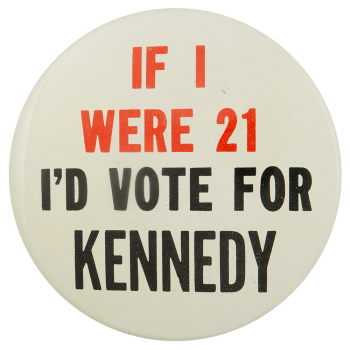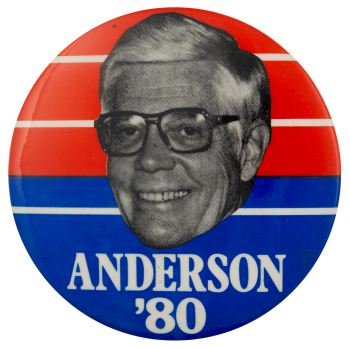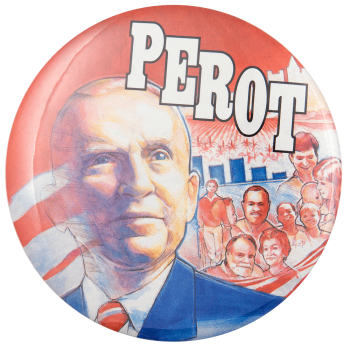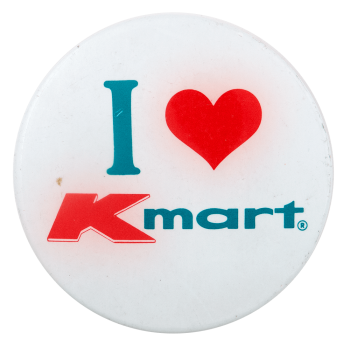Believe Muskie
| Category | |
|---|---|
| Additional Images | |
| Text on Button | Believe Muskie. |
| Image Description | Red text on white background. |
| Back Style | |
| The Shape | |
| The Size | |
| Additional Information | Edmund Sixtus Muskie campaigned for the Democratic presidential nomination in 1972. Muskie's political career spanned from the 1950s to the1980s. He served as the governor of Maine, U.S. Senator, and Secretary of State under the Jimmy Carter Administration. Although Muskie won the New Hampshire primary, his campaign faced irreconcilable damage after an interview in which he confronted accusatory remarks about his wife and his alleged use of a racial slur regarding Americans of French Canadian descent. During the outdoor public appearance, it was reported that Muskie appeared to be crying, however, he denied these allegations stating it was melting snow on his face. Consequently, Muskie was viewed as weak, which resulted in the downfall of his campaign ending his chances at the presidential nomination. |
| Sources |
Edmund Muskie | American politician. (2021). Retrieved 30 January 2021, from https://www.britannica.com/biography/Edmund-Muskie |
| Catalog ID | PO1129 |

